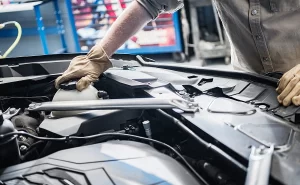As the number of vehicles increases, so too does their complexity. A recent Deloitte study found that the complexity of vehicle systems costs manufacturers up to 40% of their development budgets. These costs include the costs of systems integration, testing, verification, and validation. The industry also faces the challenge of managing variant complexity. Vehicles typically contain thousands of different wiring harness variants supporting a wide variety of vehicle customizations. Moreover, they also have several physical network busses to control signal flow.
In addition to mechanical complexity, modern commercial trucks also feature more complex technologies. Fleets rely on complex electronics and sensors, which help them operate more efficiently and comfortably. Furthermore, they utilize miles of wiring. This makes it harder to maintain vehicles, which increases the complexity. Therefore, trucks of the future are expected to be more complicated. This will increase the need for skilled technicians. Vehicle complexity is expected to continue increasing in the coming years as driver shortages increase and truck operating cycles continue to evolve.
The complexity of vehicles has also increased as manufacturers seek to reduce time to market and control the growing complexity of products. As a result, the cadence of innovation has accelerated. As manufacturers attempt to manage the massive complexity of vehicles, they must be able to create innovative, software-driven features while reducing the time it takes to bring a new car to market. With this in mind, vehicle complexity will increase dramatically. Listed below are some of the most important trends affecting the automotive industry.
Another trend that is making vehicles more complex is telematics. Vehicle data can be obtained and used for fleet management, as well as vehicle maintenance and repairs. These systems are capable of providing data to service technicians to help ensure optimal uptime. As the complexity of vehicles increases, so does the time it takes to maintain them. In many cases, telematics is helping fleets increase the uptime of vehicles by reducing the number of unscheduled breakdowns.
As vehicle complexity increases, the collision repair industry will have to invest in advanced technology to keep pace. New advanced materials will require new tools, equipment, training, and updated facilities. An approved facility upgrade can cost as much as $50,000 and continue to incur substantial expenses over the next few years. However, in many cases, these new investments will pay for themselves in the long run. It is important to note that vehicle repair cycle time will rise proportionately with the cost of advanced materials.
A growing trend in the repair complexity of heavy duty commercial vehicles is the use of electronics and other technologically advanced features in modern trucks. These vehicles also require specialized expertise. These sophisticated systems require more parts, higher labor costs, and a greater amount of time spent on calibration and reset. As a result, they are not as easy to repair as they once were. In addition, they often require a high level of skill to diagnose problems. However, this trend is expected to continue.






More Stories
The Age of Auto Accessories Supporting the Environment
The Importance of Regular Auto Maintenance for Longevity
Navigating the World of Commercial Vehicle Maintenance